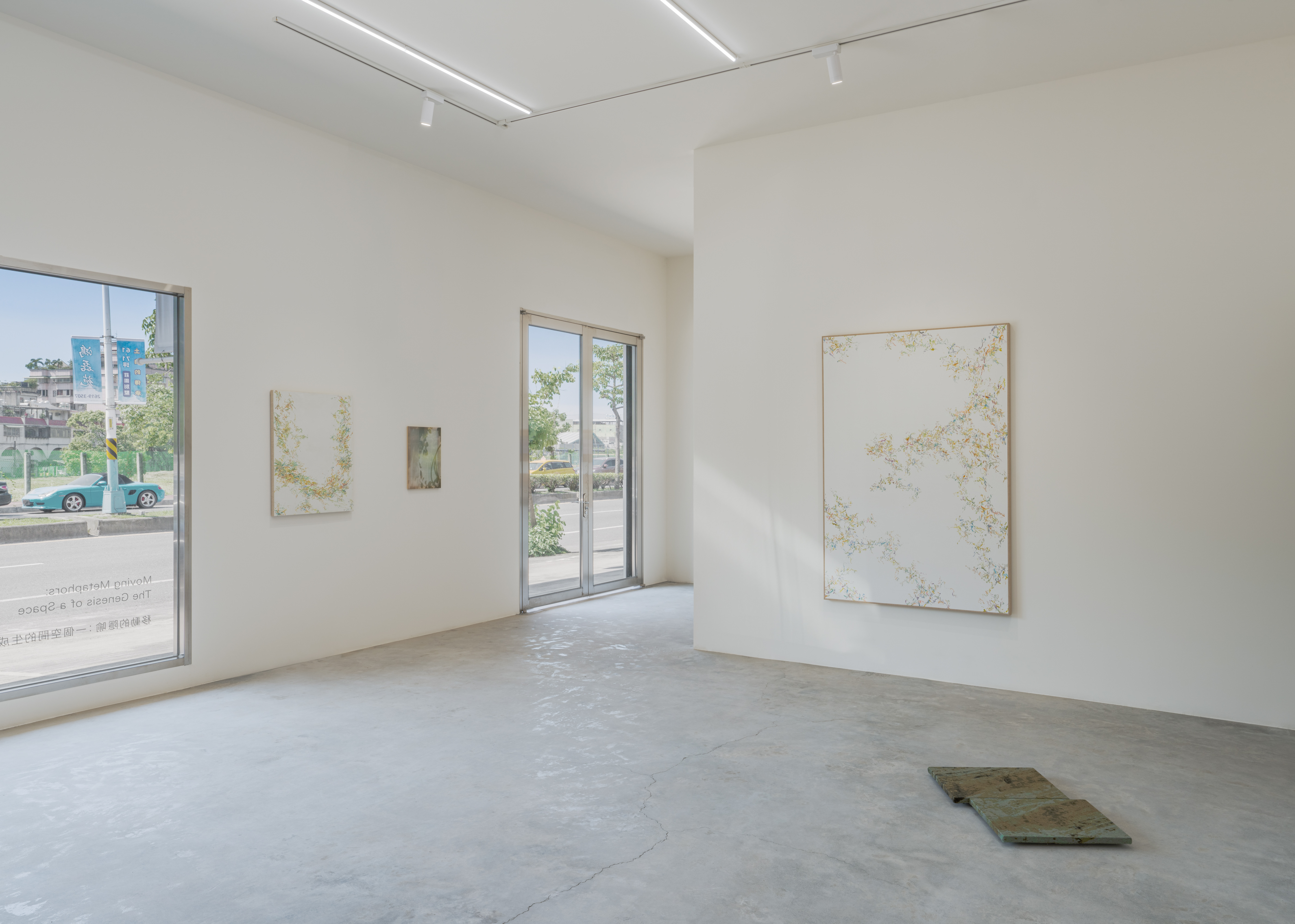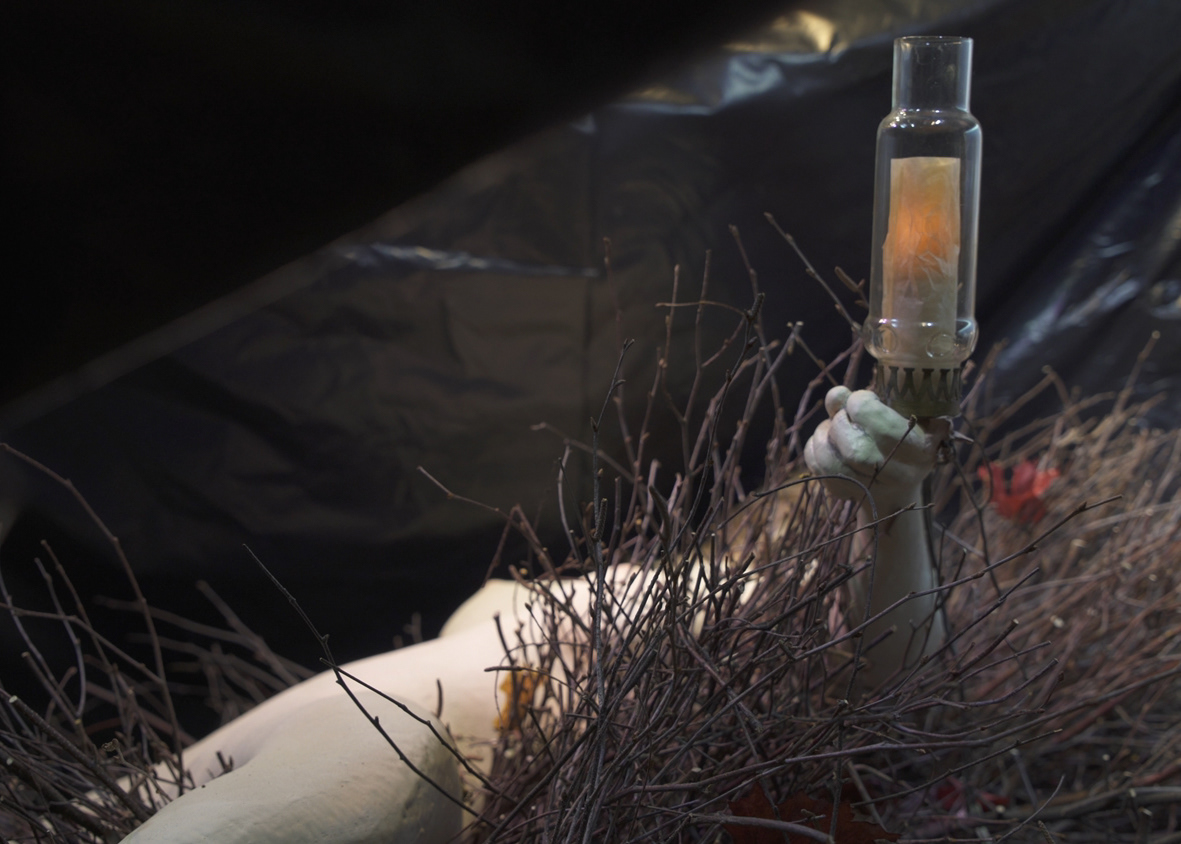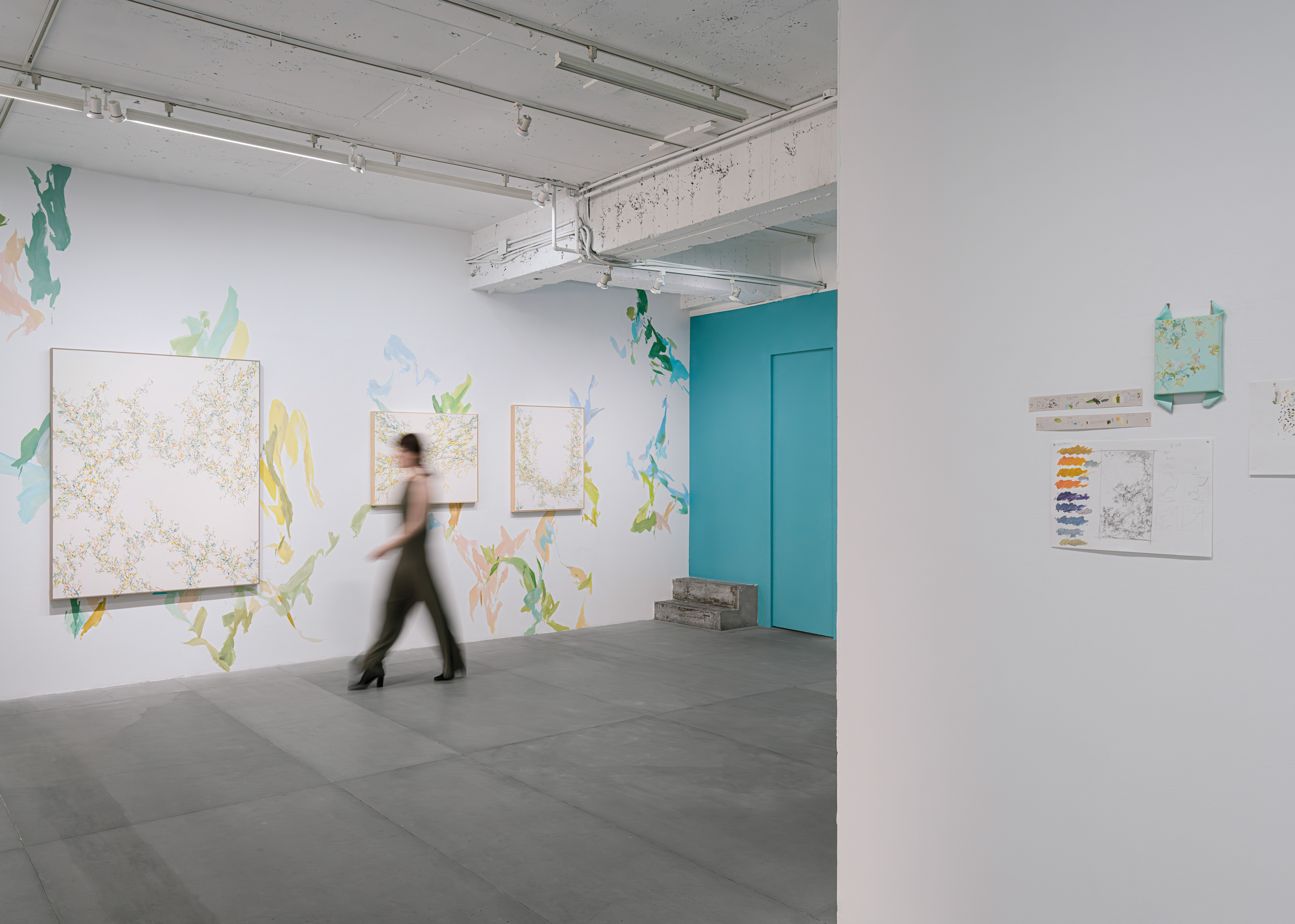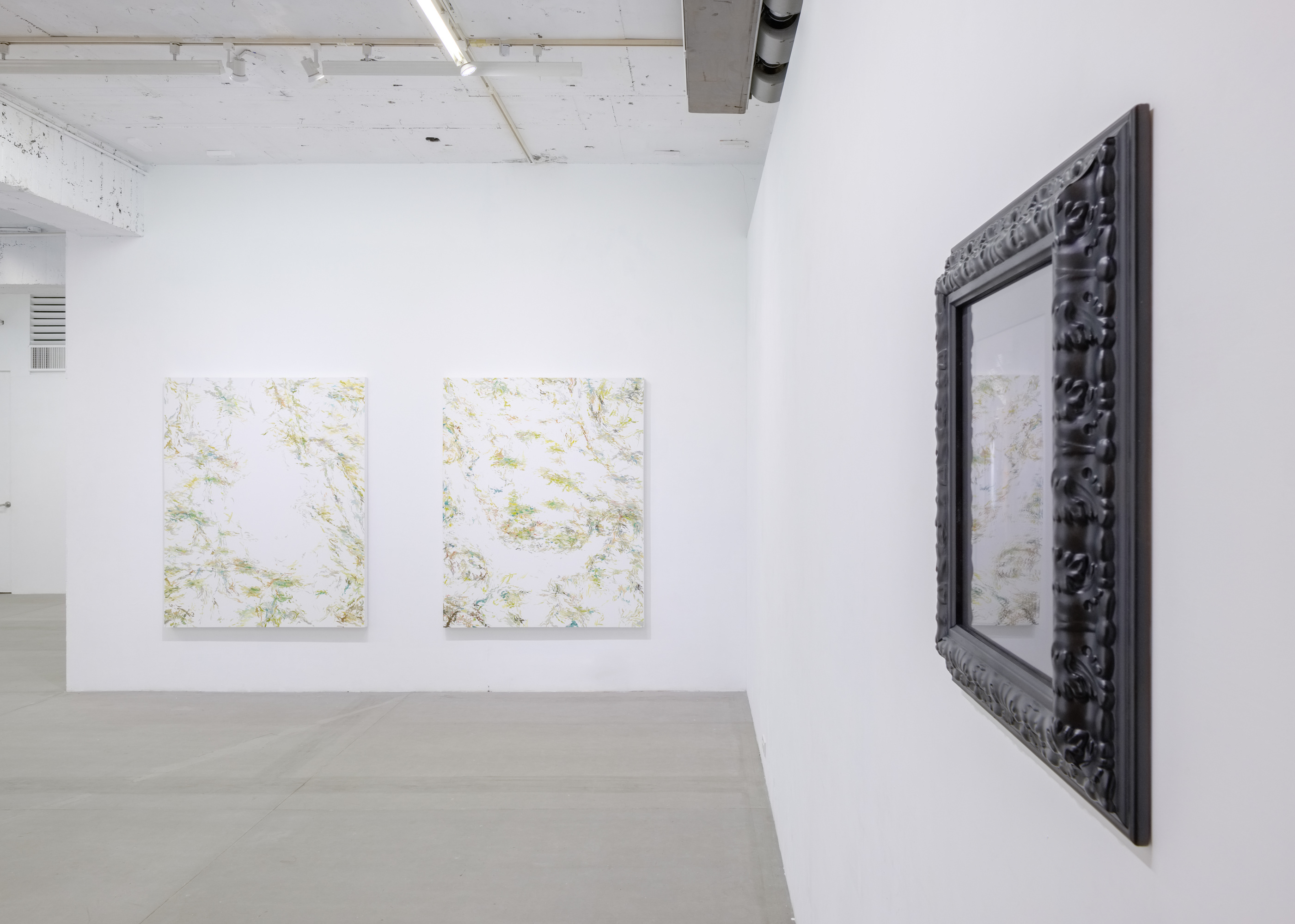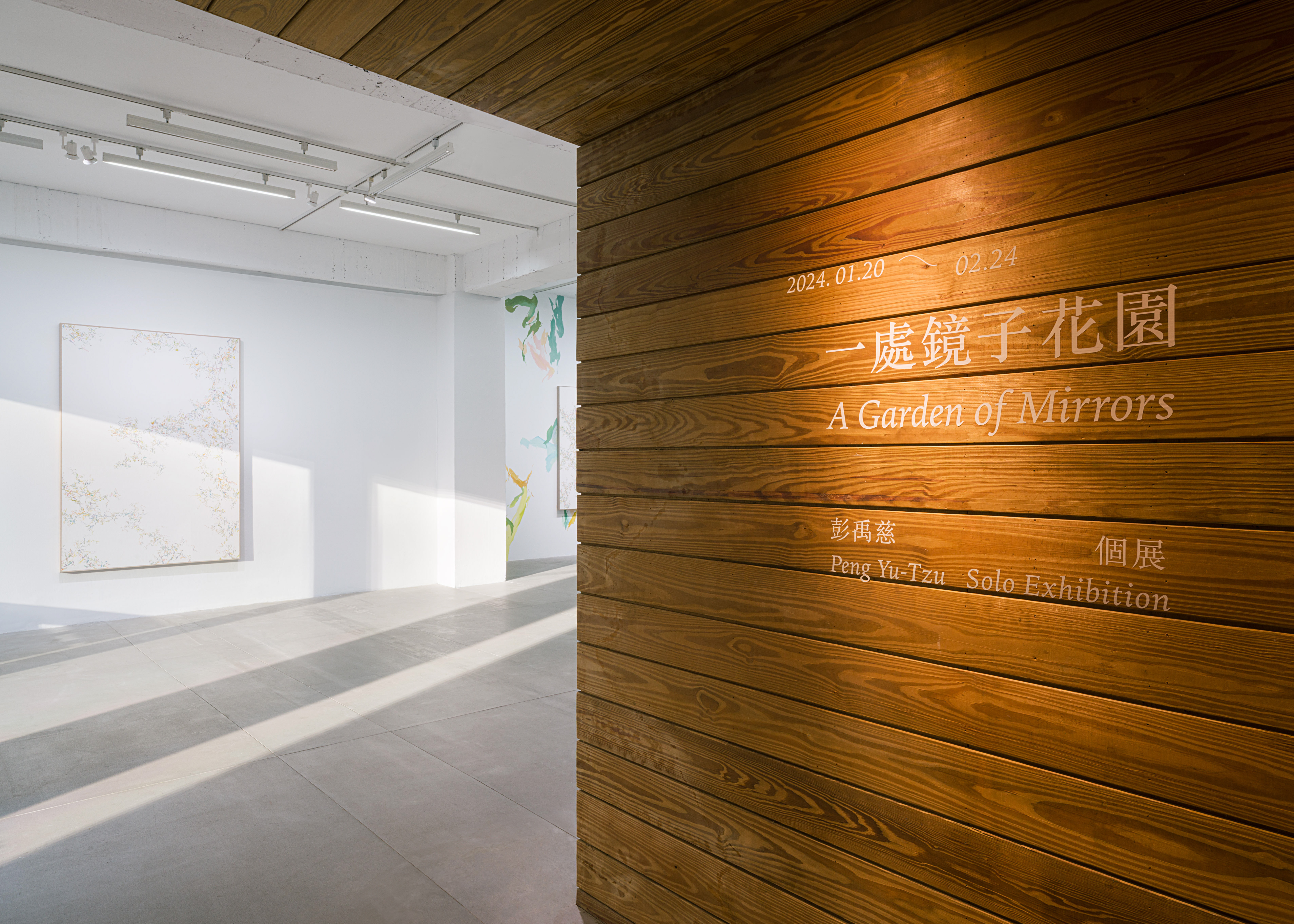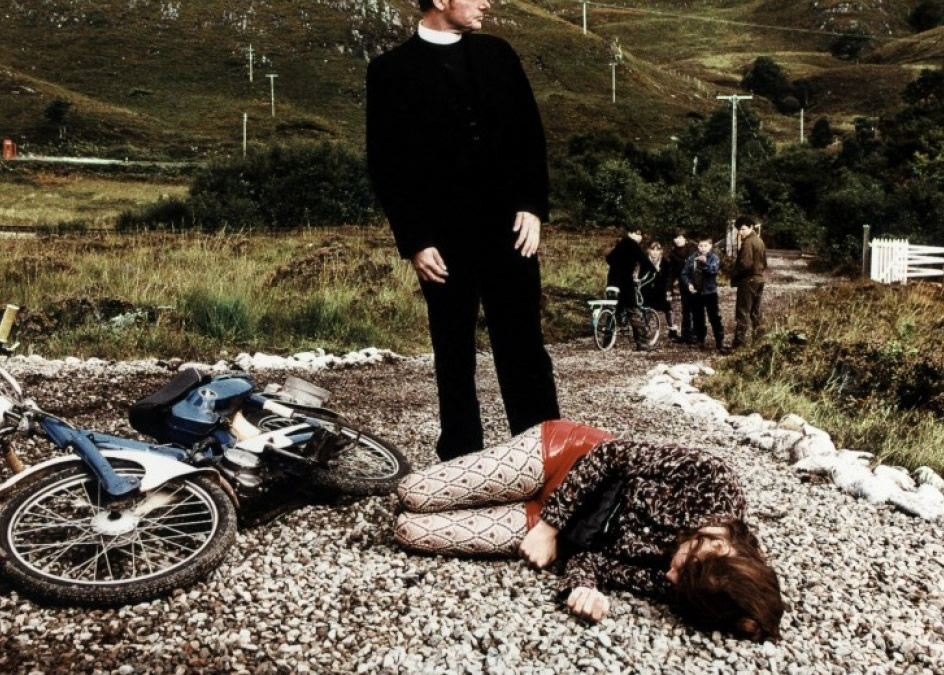文|彭禹慈
「鄰近之間的舵手The Navigators of Intimate Proximities」____震盪和燃燒、間隙的圖像分式、迷路指南
展覽企圖將思考的流程轉化為視覺思維,一部分是有感於創作中部分的缺失,來自於作品經過反覆的思考、操作、轉化而最終成為一件作品,而這過程中某些思維是不斷被提及的,甚至是在作品上很難被察覺的,這些思考的流程被稀釋了,而另一部分來自於去歸納我所感受到的情感,因為情感在感知的過程中是不可缺失的,但又是怎樣的情感形狀呢?也希望透過這次的展出,將我所蒐集的情感資料庫進行某一種感性的圖像分式,探問之間的聯繫與象徵,它不僅僅是主觀的情感,也可以是另一種情感——一種有知識的情感,透過拆解、並置、鬆動、複雜化,甚至陌異化所認識的,讓思考暫時的停滯狀態而喚起練習迷路的閱讀路徑,作品也成為觀眾手中的迷路指南,而符號和結構去錨定的對象而建立一種接近散文的視覺作品,而回應到展覽名稱中的鄰近、舵手,更多在乎在遊走在多個目的的路徑,也是個多個路徑的鄰近。
對於我周遭的物件進行收集,拍照、描繪以及書寫等等,以一個我要反覆琢磨的對象,以各個角度探問、輕扣、檢視,把思索以及書寫的時刻中,所看見的情感記錄下來,並在一個具有份量感的資料庫中,以不同形式上的強度碰觸,是非常吸引我的討論方式,也不覺得這樣的討論會有完畢的一天。而圖輯在這裡也可以被解釋為地圖輯,地圖本身具有一種繁複且重要,並切確的註記下來的程序所設定,不過在此我更傾向於是一種聯想化的概念地圖,我的想像是將各方面的論點和感受,以編織一樣所交織在一起,並且揭示我在思考的過程中,慢慢搭建的細節變化,在這裡不存在時間軸的前後、不存在科學實證的證據,也沒有任何主張位階高低的對象物,更在乎的是想像的傳遞。
而這次展覽,除了物件的符號以及象徵,我覺得它也指出了某一種屬於我的懸置分類,是非烙印上的普遍概念,希望以分類作爲聯想的前提,但不作為聯想功能的制約,而聯想也會反過來廢除,甚至是消彌掉當初約定俗成的分類,也正是因為它是碎片化的,我也把我使用的對象物視為“麵包屑”,而聯想的過程其實也是一種我的腦中導航,加深了認知的負荷,而我做的只是將他們聚在一起徘徊。
1.就像是寫日記一樣,每天都不一樣,而這裡的是一本影像日記,這裡有敘述者的立場和觀察,也正因為是日記,所以它很任性。
2.過度詮釋、停滯狀態、失去聯繫
3.它在碎片中思考,就像是現實是碎片一樣,只有通過穿過縫隙,而不是通過撫平它們,才能獲得統一。__阿多諾 «文學筆記»
Artist Statement Peng, Yu-Tzu
The Navigators of Intimate Proximities_______
Oscillations and Combustions, Methods for Discerning Imagery in Intervals, A Guide to Getting Lost
This exhibition aims to transform the thinking process into visual cognition. One part stems from a sense of what is lost when a work, after repeated contemplation, manipulation, and transformation, finally becomes a finished piece. Throughout this process, these thoughts are continually referenced, yet often imperceptible in the final work, becoming diluted in the flow of thinking. Another part comes from categorizing the emotions I perceive, because emotions are indispensable in the process of perception, but what shape do these emotions take? Through this exhibition, I hope to conduct a sensory image fraction of my collected emotional database, exploring connections and symbolism between them. This isn't merely subjective emotion, but rather an epistemic one—understood through deconstruction, juxtaposition, loosening, complexification, and even alienation. By inducing a temporary stasis in thought, the exhibition evokes a practice of getting lost in reading paths. The artworks become a guide to getting lost in the hands of the audience. Symbols and structures anchor the subject, establishing a visual piece akin to prose. Responding to the exhibition title's "proximity" and "navigators," it's more about navigating multiple purposeful paths, a proximity of multiple routes I collect objects from my surroundings—photographing, depicting, and writing about them. These become subjects for repeated contemplation, explored, gently probed, and examined from various angles. I record the emotions observed during moments of reflection and writing. In a weighty database, these are touched with varying intensities of form. This method of discussion deeply fascinates me, and I don't foresee an end to such discourse.
The image collection here can also be interpreted as a map collection. Maps inherently possess a complex yet crucial procedure of precise notation. However, I lean more towards an associative concept map. I envision interweaving various arguments and feelings, like a tapestry, revealing the gradual construction of detailed changes in my thought process. Here, there's no chronological timeline, no scientific empirical evidence, no hierarchical objects. The focus is on the transmission of imagination.
In this exhibition, beyond the symbols and symbolism of objects, I believe it also points to a kind of suspended classification that belongs to me. It transcends conventional notions of right and wrong, embodying a universal concept. Classification serves as a foundation for association, rather than a limitation on it. In turn, association may challenge or even dissolve the initial classifications. Due to this fragmented nature, I see my utilized objects as "breadcrumbs." The associative process acts as a mental navigation, intensifying cognitive engagement. My role is simply to gather these elements and allow them to meander together.
1. Like a diary, each day offers something unique. This image diary captures the narrator's perspective and observations. Its capricious nature reflects the essence of a personal journal.
2. Over-interpretation, stagnation, loss of connection.
3. “It thinks in fragments, just as reality is fragmentary, and its unity in and through the breaks and not by glossing them over. An unequivocal logical order deceives us about the antagonistic nature of what that order is imposed upon.” — Theodor W. Adorno, “Notes to Literature”
Translated by RAY HE
